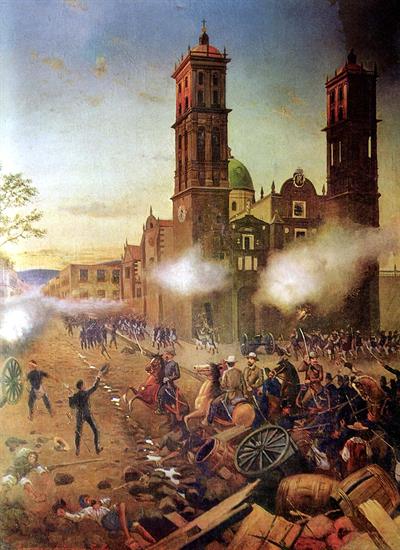 Cinco de Mayo is one of the more familiar, yet perhaps one of the less understood, holidays. It is not, for example, the same as Independence Day in the United States. Nor is Cinco de Mayo widely celebrated in Mexico. Fortunately, Schoolcraft College has an expert who can set the record straight.
Cinco de Mayo is one of the more familiar, yet perhaps one of the less understood, holidays. It is not, for example, the same as Independence Day in the United States. Nor is Cinco de Mayo widely celebrated in Mexico. Fortunately, Schoolcraft College has an expert who can set the record straight.
Dr. Zach Morales, Instructor of History and College & Beyond, teaches History 153: Contemporary America, a survey of U.S. history within the last 100 years. Dr. Morales also serves as an Academic Advisor for the Center for Latino/a Studies at Wayne State University.
Dr. Morales graciously provided the following story on Cinco de Mayo:
Cinco de Mayo commemorates a battle between Mexico and France in 1862 in the City of Puebla, Mexico. It is often confused with the remembrance of Mexican independence from Spain (September 16), but both holidays celebrate freedom and democracy.
The origins of the Battle of Puebla can be traced to a civil war in Mexico called the Reform War (1857-1860). The newly elected Liberal party had passed a series of reforms beginning in 1855 that separated church and state, reduced church land holdings, limited military political power, and enacted other progressive ideas, including instituting Mexico’s first bill of rights.
Upset with the reforms, the Conservative party, who favored keeping a central government that privileged the elite, led a coup d'état that took over Mexico City and ousted the Liberal party. The civil war lasted three years with both sides borrowing money from Spain, Great Britain and France. When the Liberal party emerged victorious, the European powers expected the new government to pay the debt owed by both factions. Mexico, instead, suspended all foreign debt payments for two years.
In December 1861, the European powers invaded the city of Veracruz and captured several more cities on the road to Mexico City to demand compensation. Great Britain and Spain came to an agreement with Mexican officials over their debt and left the campaign. However, Emperor Napoleon III of France intended to increase his empire by conquering Mexico and sent more French soldiers. Napoleon III was also interested in supporting the Confederate States of America, and controlling Mexico would be an advantageous strategic position.
Against all expectations, on May 5, 1862, Mexico defeated the better-equipped and larger French army. It took three weeks for the news of the Mexican victory to reach Spanish-language newspapers in California, where a celebration was held. As mentioned before, there was a Mexican civil war over democratic ideals followed by a European invasion. But Mexico’s army representing freedom and democracy had won a battle against the renowned French monarchy!
The following year, Mexico was still at war with France, and the U.S. Civil War continued. To raise wartime morale, Spanish-speaking grassroots organizations in California organized the first Cinco de Mayo celebrations to support Mexico and the Union army. The annual celebration continued afterward, and, to this day, Cinco de Mayo is celebrated all across the United States and is sparsely celebrated in Mexico, except for the City of Puebla, where the battle occurred.
For a more thorough history, I recommend reading “El Cinco de Mayo: An American Tradition” (2012) by David Hayes Bautista.